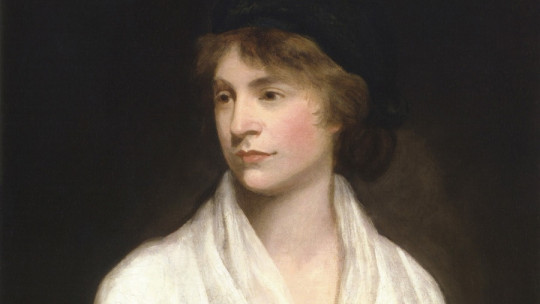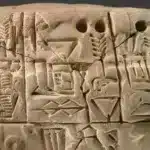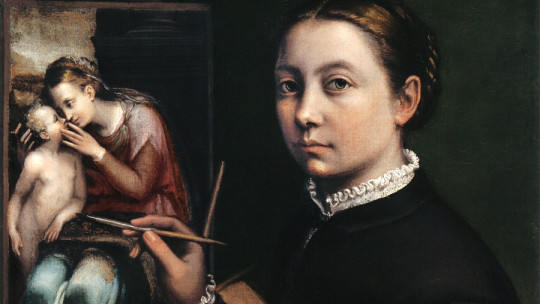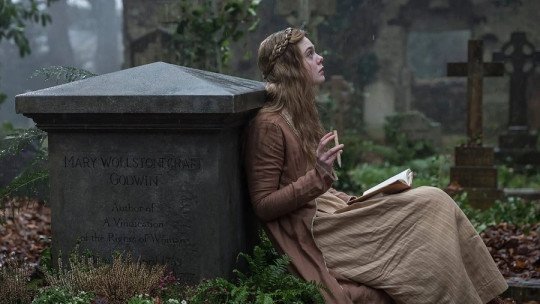Until relatively recently, writing was a man’s task And not because women didn’t write; On the contrary, most of them, especially if they belonged to the wealthy classes, spent long periods of time dedicated to writing. But it was one thing to write in the privacy of one’s home, and quite another to publish. It was not until the 19th century that literary works written by women began to proliferate and, despite this, the majority were published under a pseudonym.
However, they existed throughout history women who challenged established norms and decided to publish Some had the enormous fortune to be able to dedicate themselves to it professionally; Others were relegated to oblivion, and only recently have their memories been rescued. In this article, we offer you a journey through 6 of the most important writers in literature.
6 important writers that should not be forgotten
The seven women you will find below dedicated their lives to literature, some with more success than others. The selection has been based, above all, on the level of knowledge that society has of them. We have tried, therefore, to include the most forgotten writers on the list, to contribute to the recovery of their history.
1. Mary of France (12th-13th centuries)
The troubadour Middle Ages was not only a time of poets, but also of poetesses. One of the trobairitz (the name given to these female “troubadours”), the best known is María de Francia, of whom, however, We know little beyond the work he has left us
He lived in France during the 12th and 13th centuries, although his date of birth and death could not be determined. Her literary production spans the period 1160-1215, which has helped scholars establish a series of candidates who could have been Mary of France. Among them, we have Mary, Abbess of Shaftesbury and half-sister of King Henry II; Mary, Countess of Bologna, and even the daughter of Eleanor of Aquitaine, who was, like her mother, a great patron of the arts. However, this latter candidacy is unlikely, given that she died in 1198, long before the production of Mary of France concluded.
Among the most notable works of María de Francia are the lais what he wrote The lais They were very popular poetic compositions in the 12th and 13th centuries, which generally sang of courtly love and the hero who was the protagonist of the deeds; both very common themes in the literature of the time. In the case of the lais of Mary, are written in Anglo-Norman, a language related to the tongue of Oïl, the set of Romance languages spoken in the regions of medieval France.
2. Wallada bint al-Mustakfi (994-1091)
Wallada is one of the most famous poets of Al-Andalus and one of the most rebellious and attractive personalities in Córdoba at the time. She was the daughter of the Caliph Muhammad al-Mustakfi, who reigned as a result of an assassination and who, in the end, was also murdered by his enemies. As a result, Wallada was princess for a few months, enough time for her passion for the refined culture so characteristic of the Umayyad court to germinate in her.
Once his father dies, Wallada collects his large inheritance and distances himself from the court circle. In 1025 he founded a kind of “literary salon” in Córdoba, where he taught poetry and music to young girls. Beautiful, arrogant and highly cultured, Ella Wallada is the most fascinating woman in the Umayyad capital; Extraordinarily gifted in poetry, she has no rival when it comes to composing verses.
Wallada lived her entire life independently, without marrying or being financially tied to any man. The fortune that her father had left her was enough to live comfortably, completely dedicated to love and poetry. The love of his life was the poet Ibn Zaydún, to whom, however, he dedicated cruel satires after their separation , which are among Wallada’s best-known works. Some satires that he answered in the same tone, by the way.
3. Murasaki Shikibu (978-1014)
The work for which this Japanese writer is known is Genji novel, an extensive story that is considered the first “modern” novel in history. The story of the life adventures of Genji, a boy who tries to find pure love in a world corrupted by fickleness and betrayal, is a deep portrait of the human soul, where many authors have wanted to see a clear antecedent of the psychological novels of the 19th century But the point is that Murasaki Shikibu lived almost a thousand years before Tolstoy and Zola, which makes her work an indisputable milestone in universal literature and, her, one of the most important writers.
As often happens with characters (especially female ones) so far away in time, we know little about their lives. It is assumed that he was born in Kyoto into the Fujiwara clan, who were related to the imperial family. Murasaki began to read and write from a very young age, and her intelligence and talent caught the attention of her father who, according to legend, lamented that “she had not been born a boy.”
The Genji novel It was a real success in Japan The empress, fascinated by the work, called Murasaki to court, where she remained until his transfer to a monastery. The date of his death is unclear: experts suggest that he died around 1014, at the age of 40, from unknown causes.
4. Phillis Wheatley (1753-1784)
Phillis Wheatley’s story is a story of overcoming. She was born in Africa, probably in what is now Senegal, and was kidnapped when she was very young to be sold into slavery in Boston Harbor. There she was bought by Mr. Wheatley, from whom she received her surname (as was usual among slaves). Her name, Phillis, was taken from her boat that took her to America. Nothing is known about her real name, her family and her country.
The Wheatleys treated her well and raised her practically as if she were their daughter. Soon, Phillis displayed uncommon intelligence and a great talent for poetry , which the Wheatleys encouraged. At age 14, Phillis had already published his first poem in a Boston newspaper, which was to be followed by several more. The quality of her poetry was undeniable, but the Boston society of the time, racist and misogynistic, refused to believe that a slave was the author of it. So, to prove her authorship, Phillis had to pass a humiliating test: before a court of 18 men, she was forced to recite her poetry, as well as passages from the Bible and some classic poems. Finally, the men were convinced of the young woman’s talent and signed a document proving that Phillis was, indeed, the author of her poems.
Although he managed to publish a book of poetry in England, fate was cruel to Phillis. She died at only 32 years old, broke and ill. At least she died free of it, as the Wheatleys had emancipated her in November 1773.
5. Mary Wollstonecraft (1759-1797)
Daughter of the Enlightenment and very committed to the demand for women’s rights, Mary Wollstonecraft She is considered one of the most prominent writers and intellectuals of eighteenth-century Europe
With strong and revolutionary ideals, Mary always advocated a life free from ties and social conventions. With her close friend and intellectual confidant, Fanny Blood, Mary made plans to live together, both dedicated to study and mutual help, which highlights her lack of connection with a society that demanded a prosperous marriage. Mary founded a school with her sisters and Blood, but the project failed. Fanny, who had finally married, died in childbirth in 1785, a tragedy that left a deep mark on the writer.
Possibly Mary Wollstonecraft’s most famous work is Vindication of women’s rights , written shortly after the French Revolution. However, she is also the author of such significant novels as Mary (1788) and María (1798, unfinished), both a true denunciation of the situation of women.
Despite being a firm opponent of marriage, Mary ended up marrying William Godwin, with whom she lived a relationship based on love and mutual respect. Godwin loved and admired Mary; When the writer died as a result of a postpartum infection, her husband was absolutely devastated. By the way, the child who was born would follow in the literary footsteps of her mother: Mary Shelley, the author of Frankenstein.
6. Gertrudis Gómez de Avellaneda (1814-1873)
A tireless defender of women’s rights and a convinced abolitionist, Gertrudis Gómez de Avellaneda is one of the most important writers of Latin American literature.
Born in Cuba, at the age of 22 she moved to Spain, where she published under the pseudonym The Pilgrim His crowning work is probably the novel Sab, published in 1841 and considered the first anti-slavery novel in history (predating by ten years the famous Uncle Tom’s Cabin, by Harriet B. Stowe). In it, Gómez de Avellaneda not only criticizes slavery and the fierce capitalism that is beginning to emerge in the West, but also portrays an interracial love story, something unprecedented until then.
Gertrudis also wrote for the theater, with notable works such as Saul (1849) and Balthazar (1858), closely linked to Romanticism. He also cultivated poetry, with poems such as Return to the homeland, To the moon either To a young mother on the loss of her sonfull of extraordinary emotionality.









